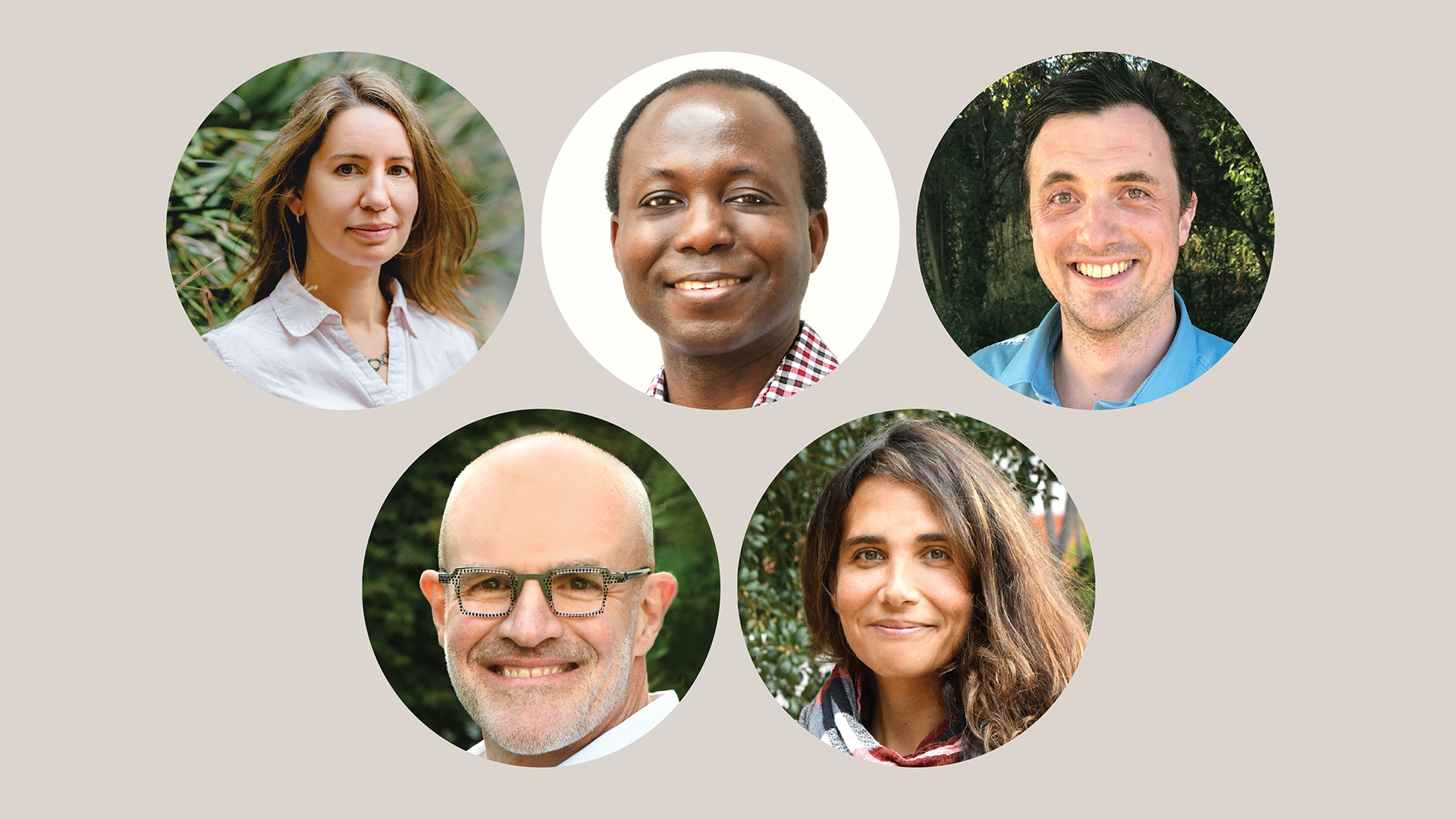2024 Bakar Prize recipients target skin disease, spintronics and tree bark

UC Berkeley
March 11, 2024
Five UC Berkeley faculty members have been awarded the 2024 Bakar Prize, which is designed to give a boost to campus innovators as they translate their discoveries into real-world solutions.
This year’s winners are trying to engineer probiotics to treat skin disease, improve treatments for heavy metal contamination, design ultra-compact lasers and spintronic computer memory and finds ways to use bark as a construction material.
The prize is given annually to former Bakar Fellows and provides additional resources to ensure a successful transition of their technology from academic research to industry applications. Now in its 12th year, the Bakar Fellows Programs has supported 74 Faculty Fellows and 70 Innovation Fellows as graduate students or postdoctoral fellows. The program continues to attract and support innovative research teams that are committed to moving their basic research discoveries into real-world applications.
The 2024 prize recipients are:
Jay Keasling, professor of chemical and biomolecular engineering and of bioengineering, the Philomathia Foundation Chair in Alternative Energy, senior faculty scientist at Lawrence Berkeley National Laboratory and chief executive officer of the Joint BioEnergy Institute (JBEI): Engineering probiotics to treat skin disease
When treating genetic skin diseases such as Netherton Syndrome, atopic dermatitis and acne rosacea, inflammation caused by the skin bacteria Staphylococcus aureus is a major problem. Topical antibiotics to fight S. aureus infections are short-lasting, which almost inevitably leads to re-occurrence. Keasling hopes to break this vicious cycle by preventing re-colonization by the harmful bacteria. To do this, he proposes to engineer bacteria — Corynebacterium glutamicum — that he has previously engineered to treat these skin conditions to also produce two different antibiotics to kill S. aureus. The antibiotics — the natural peptide pediocin and the commonly used erythromycin — should reduce infections, lessen the need for antibiotic treatments and mitigate the risk of bacterial resistance.
Rebecca Abergel, associate professor of nuclear engineering and of chemistry and director of the Glenn T. Seaborg Center at Berkeley Lab: Extending indications for heavy metal decorporation products
Toxic heavy metals, such as lead, are ubiquitous in our environment, yet there currently is no viable option for removing them from the body when inadvertently consumed. The only practical therapy is treatment with chelating agents that form excretable complexes. Abergel’s team is trying to broadly extend the applicability of current drug treatment products to a wide range of heavy metal toxicities and everyday-life contamination scenarios, including chronic exposure of children. She plans to conduct experimental decontamination studies that will validate and translate these initial chelating drugs into treatments that are accessible and affordable to patients all over the world. She specifically hopes to develop treatment regimens appropriate for pediatric populations and for the removal of internalized heavy metals resulting from chronic exposure.
Boubacar Kante, the Chenming Hu endowed Chaired Professor in electrical engineering and computer sciences: Ultra-compact lasers for mobility, sensing and communications
Compact semiconductor lasers are ubiquitous in our modern life, with applications in communication, sensing and imaging, but their low power prevents their use in other contexts, such as for manufacturing or in the recently achieved laser fusion that promises plentiful and carbon-free energy. Kante’s recent discovery of scale-invariant Berkeley Surface Emitting Lasers (BerkSEL) promises increased power from semiconductor lasers, which has been out of reach until now. The Bakar Prize will help him develop these high-power semiconductor lasers for numerous applications.
Maria Paz Gutierrez, professor of architecture: Re-engineering bark
Engineered wood products for construction are a multibillion-dollar business in the U.S., but one waste product of the wood industry — bark — typically ends up in cheaper materials, such as insulation, or even as mulch. Paz Gutierrez has developed a 3D extrusion process that uses bark waste, with steam and lichen hydrogels, to make large-scale exterior building components with improved mechanical performance. As part of her Bakar Prize project, she will tackle scalability and functionality hurdles for large-scale exterior applications of this process, which could redirect low-grade wood residues away from fuels, mulch and landfills and forge a true circular bioeconomy in construction while contributing to biotechnology for engineered living materials. As a previous Bakar Spark Award recipient, she showed that 3D cork blocks with encapsulated lichen hydrogel have an added bonus — they can detoxify indoor air.
James Analytis, professor and the Charles Kittel Chair in physics: In memory computing, a fully spintronic approach
As a 2021 Bakar Spark Award recipient, Analytis investigated how exotic quantum phenomena, specifically the spin of electrons, could be used for novel communication and quantum electronic applications. One key realization of that research was that spin transport only works effectively in insulating ferromagnets. He subsequently focused on one such material known to have the relevant properties at room temperature, and created designs for spin gates, spin memory and spin logic. For his Bakar Prize project, he plans to fabricate in-memory computing chips based on spin, which should have broad applicability because they are robust and energy efficient, consuming thousands of times less power than current chips.